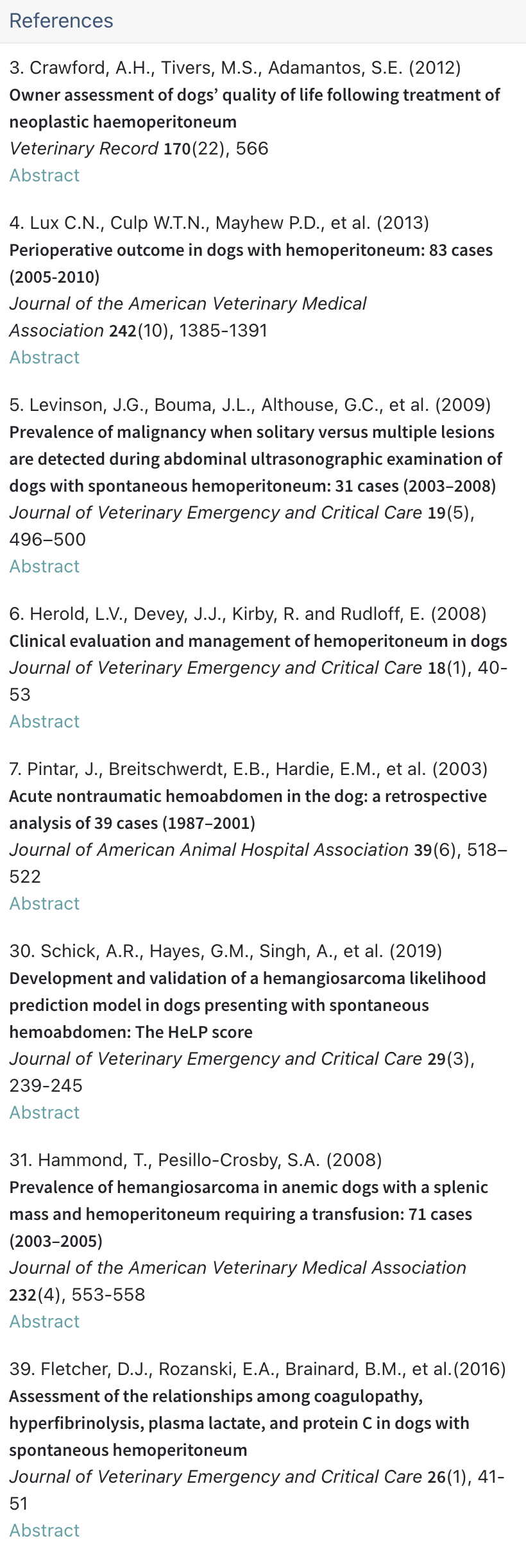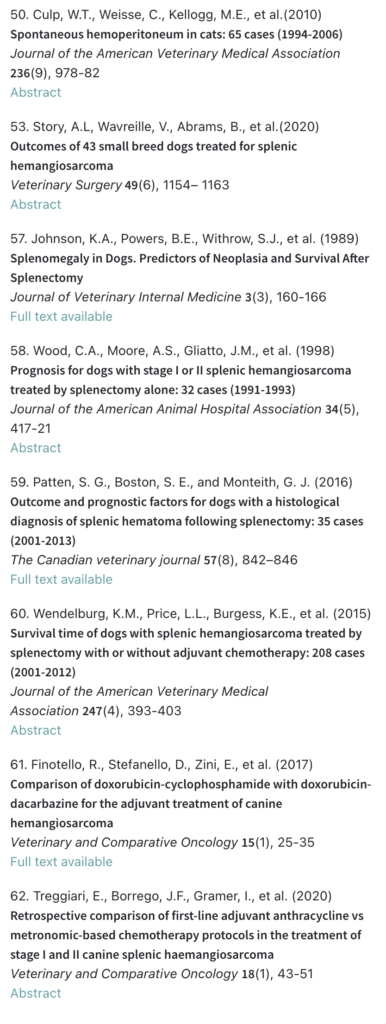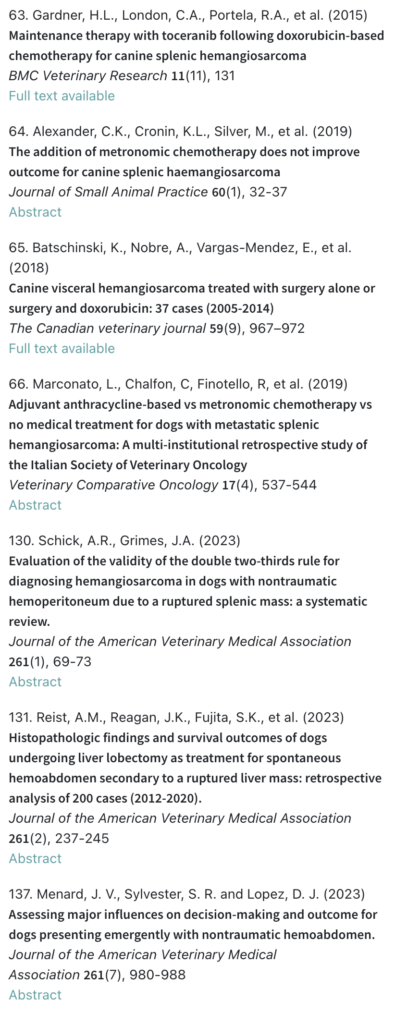CANINE HAEMOPERITONEUM
When contemplating invasive and potentially costly surgery, it is crucial to evaluate the cost-benefit ratio for both the patient and the client
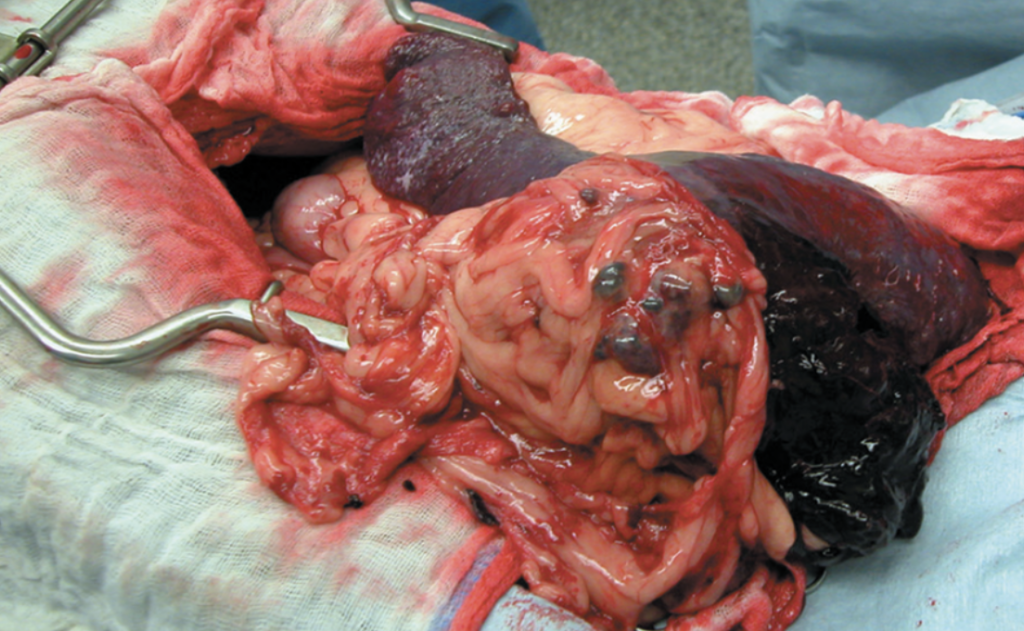
Dilemma: Haemoperitoneum
A dog is presented with a spontaneous haemoperitoneum in a critical condition. The owner is uncertain about proceeding with emergency surgery and seeks to understand the prognosis with and without the surgical intervention
Ask VETbytes?
Use REAL-WORLD DATA to equip clients with essential information for making cost-benefit evaluations of treatments
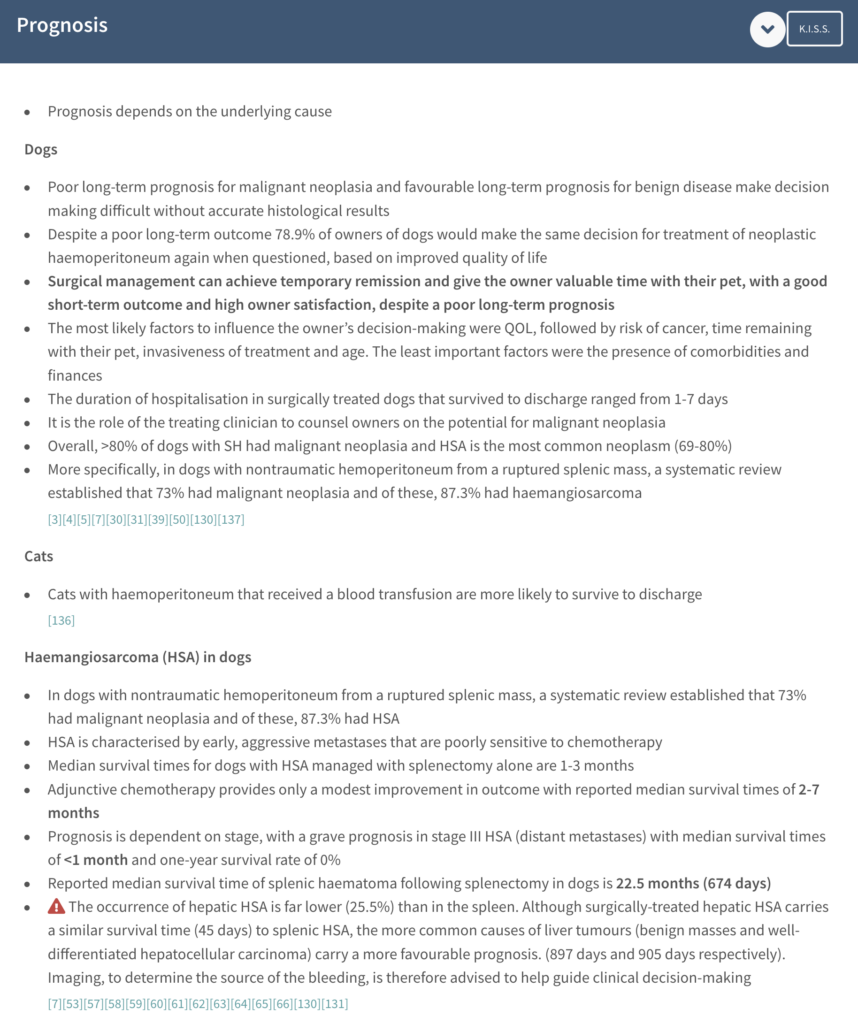
Client communication
Discussing spontaneous haemoperitoneum with a client
Vet: Your dog has been diagnosed with a spontaneous haemoperitoneum, and you’re probably feeling overwhelmed. Let’s discuss the risks, benefits, and likely outcomes for your dog, whether or not we proceed with surgery.
Client: Yes, I’m very concerned. What should we do?
Vet: First, let’s break down what we’re dealing with. Spontaneous haemoperitoneum means there’s internal bleeding into the abdomen, but we don’t yet know the exact cause. This can be due to malignant (cancerous) or benign (non-cancerous) causes.
Before deciding on surgery, I think it would be a good idea to perform some imaging studies, such as chest X-rays and abdominal ultrasound. These tests can help us locate the source of the bleeding and detect any signs of malignant spread, guiding us in deciding the best course of action.
Risks of conservative management
- If the cause is malignant, such as haemangiosarcoma, the prognosis is very poor without intervention. Haemangiosarcoma is an aggressive cancer that spreads quickly and is not very responsive to chemotherapy.
- Dogs with haemangiosarcoma typically have a median (typical) survival time of 1-3 months without surgery, and less than a month if the cancer is advanced.
- If it’s a benign cause, like a splenic haematoma, the dog may still experience ongoing bleeding and deterioration without surgery.
Benefits of conservative management
- Avoids the stress and risks associated with surgery and hospitalisation.
- Suitable for owners prioritising the least invasive option, especially if the dog has multiple health issues or is of advanced age.
Risks of surgical intervention
- Surgery can reveal malignant neoplasia in over 80% of cases, with haemangiosarcoma being the most common.
- Post-surgical recovery involves 1-7 days of hospitalisation.
- The median survival time with surgery for HSA is still limited (1-3 months with surgery alone, slightly longer with chemotherapy).
Benefits of surgical intervention
- If the bleeding is due to a benign cause, like a splenic haematoma, the prognosis after surgery is quite good, with a median survival time of about 22.5 months.
- Even in malignant cases, surgery can provide temporary remission, improve the quality of life and give you valuable additional time with your pet.
- Many owners report high satisfaction with the decision to pursue surgery, even in cases of malignancy, due to the improved short-term quality of life.
- Imaging and surgical exploration will give a definitive diagnosis, allowing for more informed decision-making about subsequent care.
Client: That’s a lot to consider. What would you recommend?
Vet: Well, if the mass is benign, surgery could significantly extend your dog’s life. However, if the mass is malignant, while surgery often provides valuable information and can improve short-term quality of life, you should be prepared for a limited prognosis even with the best care.
Before we proceed with any decisions, as mentioned, I strongly recommend performing chest X-rays and an abdominal ultrasound as this information will be crucial in deciding the best route forward.
The decision ultimately depends on your priorities: if you’re looking for more time and potentially better quality of life in the short term and finances allow surgery is likely the best option. If minimising stress and intervention is more important for whatever reasons, then attempting to manage symptoms without surgery might be preferable.
Client: Thank you for explaining everything. I need a few moments to think about this and discuss it with my family.
Vet: Absolutely, we will begin stabilising your pet with intravenous fluids, giving you some time to consider your options. Please let me know if you have any questions or need further information. We’re here to support you through this process.
What is the evidence?
